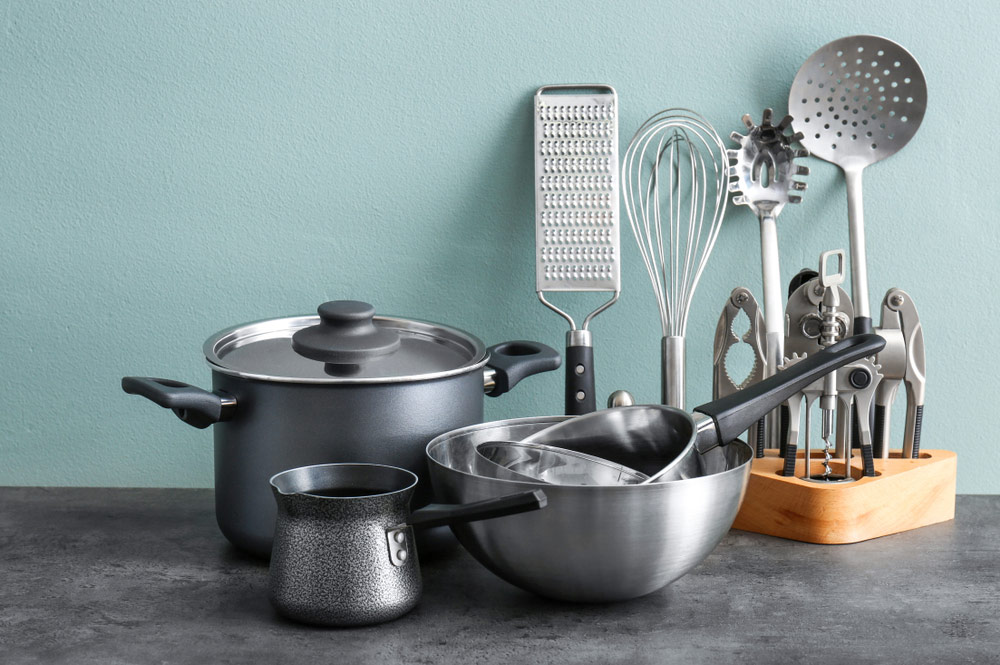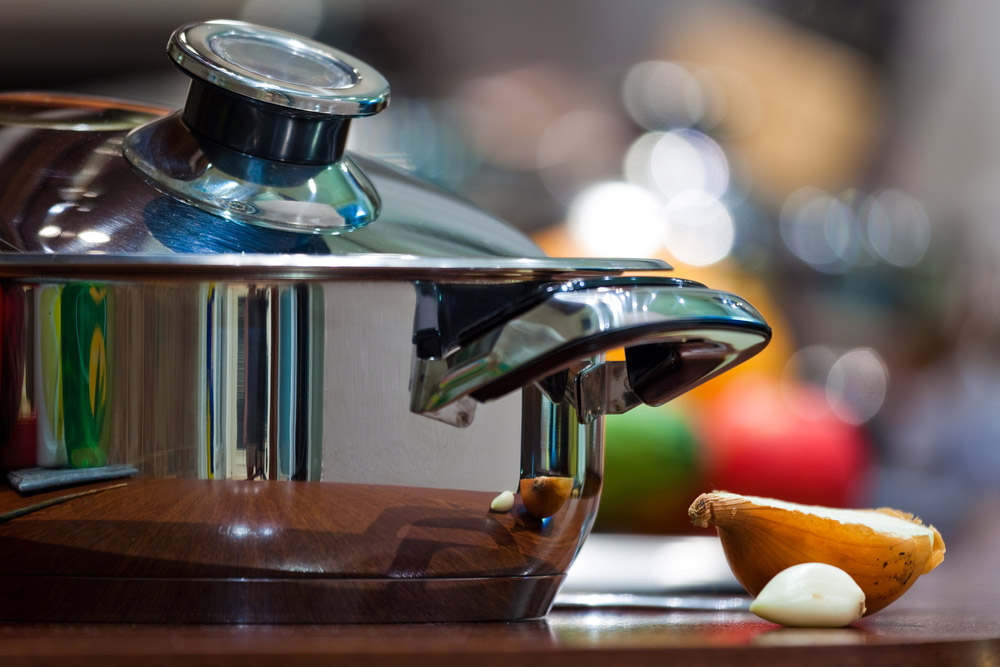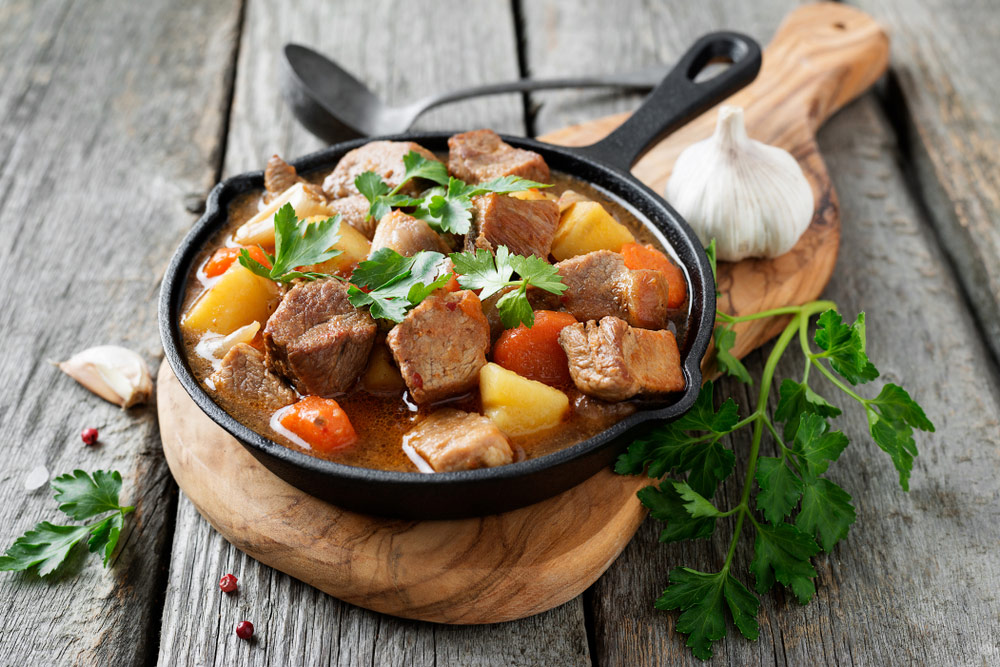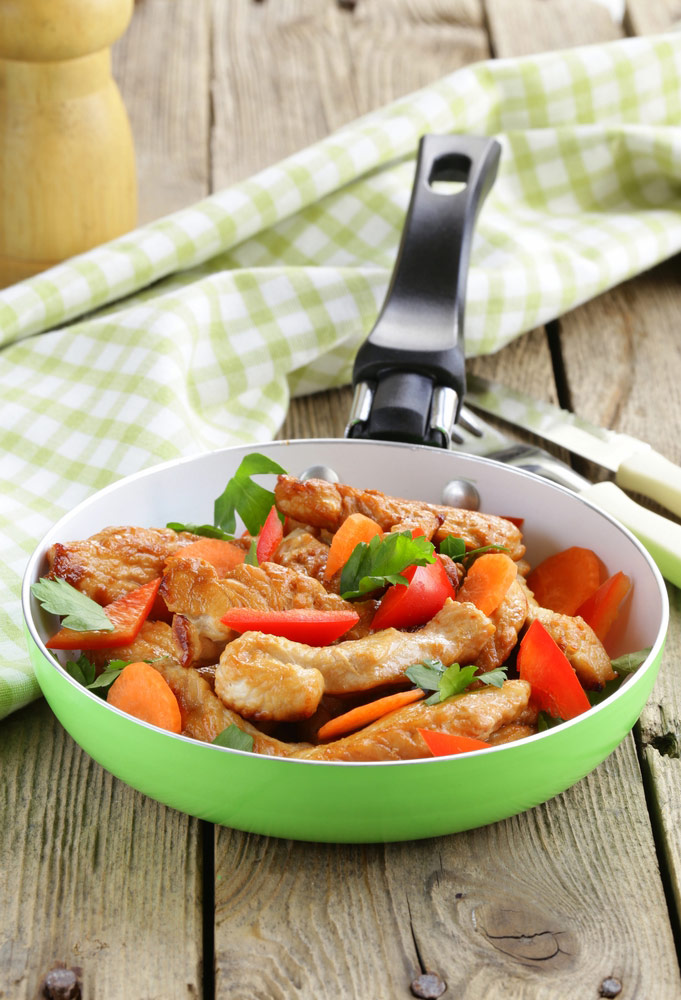The Ultimate Guide To Home Cookware

Cast iron… stainless steel… ceramic…
What’s the difference?
Cooking has been an integral part of life ever since we as humans learned how to tame the flames. Although cooking over a fire was the primary, if not the only method of cooking for many generations, that’s certainly not the case today. We’ve come a long way in developing different ways to cook our food and different surfaces to cook it on.
Today, with a plethora of options out there, choosing the cookware that suits your needs isn’t the easiest thing to do…
That’s why we’re showing you some of the most popular cookware surfaces available on the market, and in doing so, hopefully answering any questions you have about all things pots and pans.
Stainless Steel:
Used religiously by many home cooks and pro chefs alike, stainless steel cookware is considered durable, versatile and easy to use. Unlike some other cookware surfaces, stainless steel can be cleaned effortlessly and requires little to no maintenance. To achieve that beautiful browning and distinct flavour (thanks to what’s known as the Maillard Reaction) a stainless steel surface is your best bet.
Have you ever seen the numbers 18/10 or 18/8 on cookware? Well, that’s indicative of the stainless steel grade, or quality. These numbers represent the ratio of chromium (18) to nickel; without making things too complex, the higher the nickel content, the more corrosion-resistant the stainless steel cookware is. So, you’re almost guaranteed long-lasting cookware when you invest in high-quality stainless steel from reputable brands such as Scanpan and Carl Schmidt Sohn.

Stainless steel cookware is also free from the non-stick coatings PFOA and PTFE, which are known to be harmful to our health. Although this means you’ll have to move your food around a little more to prevent it from sticking, it’s a small tradeoff when you think about the potential negative effects you’re avoiding by not using a non-stick surface. In addition, the lack of pan coating means you can use metal utensils without having to worry about damaging the cooking surface.
One downside of stainless steel is poor heat distribution if the pot or pan doesn’t contain a copper or aluminium core. Also, adding extra cooking oil and cooking at a lower temperature may be necessary to prevent sticking.
Tip: Add warm water to the pan while it’s still hot, and scrape off any bits sticking to the surface.
Nevertheless, it’s safe to say that stainless steel is a jack of all trades, master of none. Grill your steaks, saute your veggies, flip your pancakes, all with this highly dependable surface.
Cast iron:
A true veteran in the world of cookware, cast iron has a long history. You may have a cast iron frying pan that has been passed down from your parents, grandparents or even higher up the family tree; A true testament to the durability of cast iron cookware.
Cast iron is the epitome of versatility – in the oven, on the stove or grill, over fire, you name it, cast iron pans are compatible.
But you need to make sure your cast iron cookware is seasoned. But this isn’t the ‘salt, pepper, a little oregano and garlic powder’ type of seasoning. Before using cast iron, a layer of fat or oil must be applied, which creates a natural stick and rust-resistant surface to cook on. Cast iron also remains hot for a longer period of time, due to its excellent thermal density; the CS-KOCHSYSTEME dutch oven is perfect for cooking up hearty soups, stews, casseroles, and keeping them warm.
A little known fact, cooking with cast iron can actually add iron to your food. So if you’re looking to boost your iron intake while enjoying a delicious home-cooked meal, cast iron cookware is arguably the best option out there.

One apparent con of cast iron is the weight; considered the heaviest type of cookware. The handle of cast iron cookware will also heat up, so you need to be very cautious, especially if you’re not used to using it. Grab the handle with your bare hand and you’ll be in for a hot, nasty surprise.
Tip: You can now purchase leather, silicone or cotton handle holders that will ensure a safe cast iron cooking experience.
Foods such as tomato and citrus should be avoided when cooking with cast iron, as the acidity can strip away the seasoning and cause excessive leaching of iron, making your food taste metallic.
Overall, when it comes to long-lasting, heat retaining and multifunctional cookware, cast iron takes the cake. But keep in mind, there’s more maintenance involved – but it’ll all be worth it knowing you can hand it down to the next generation!
Ceramic coated:
Ceramic coated cookware gained immense popularity after entering the market, as a safe alternative to Teflon. They come with all the functional and practical benefits of non-stick cookware, without the potentially toxic PFOA and PTFE chemical coating.
The jury is still out on just how safe ceramic coated cookware is, but it’s undoubtedly an upgrade from the standard non-stick Teflon pots and pans. Most ceramic coatings are made from a sand or stone derivative, making it better for both your health and the environment. The heat transfer of ceramic coated cookware is exceptionally efficient so you can cook up a storm in an instant, using less power. With an aluminium base and ceramic coating, lightweight cookware is achieved; so you can shake the pan with ease for stir-fry Sunday.

But as with everything, we have to take the good with the not-so-good…
The ceramic coating is prone to chipping, so it’s best to avoid the use of metal utensils and opt for wooden or silicone instead. Additionally, no matter how careful you are with keeping the coating unscathed and chip-free, it will wear off over time.
From an ease-of-use and affordability standpoint, ceramic coated cookware is a winner in our books, especially for those on a budget or cooking novices.